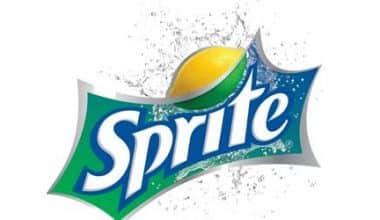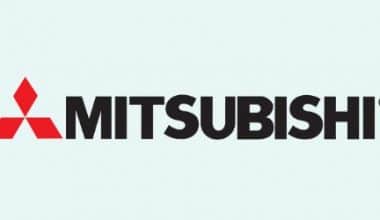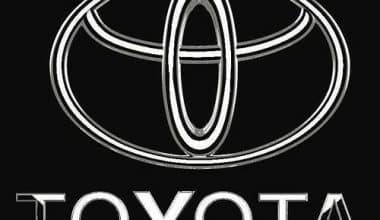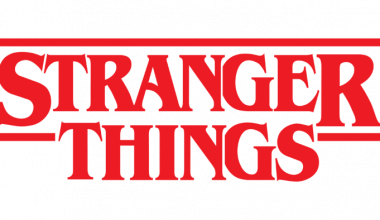A handful of candies are associated with specific seasons. Think about this. Candy corn for Halloween, candy canes and peppermint patties for the holidays, and Peeps for Easter. Other candies are available to consumers regardless of the occasion or time of year. M&M’s is a prime example of a candy that does this. Below, we delve deeper into this iconic candy and examine how M&M’s have become one of the world’s most recognizable candies with an exceptional logo.
Overview
M&M’s was created in the United States in 1941. Forrest Mars Sr. came up with the idea for M&M’s after seeing his father’s company thrive during the Spanish Civil War in the 1930s. Forrest observed soldiers eating Smarties and chocolate pellet-type candy during the war. The candies had a hard outer shell that prevented them from melting, allowing the army to consume them.
Given Forrest’s inspiration, it stands to reason that he created this candy just as the United States entered World War II. During the war, M&M’s were produced and distributed exclusively to the United States Army because, like the candy he previously studied, his M&M’s did not melt in warm climates. The candy was mass-produced for public consumption after the war, and the company took off.
What exactly is M&M’s?
M&M’s is a brand name for one of the world’s most well-known chocolate snacks: small drages with a colorful glaze. The brand is well-known worldwide for its flavor and quality, and its advertising campaign features two amusing candies making jokes about everything and themselves.
The Evolution of M&M Logo
While the M&M logo appears simple, the company commissioned graphic designer Nicole Garcia to create it. The two “M’s” represent the company’s founders, Forrest Mars Sr. and Bruce Murrie. The logo hasn’t changed much over the years, always including a simple wordmark, but below we take a closer look at the various color and font versions.
1941-1954: The Original M&M logo
The first logo version was created in 1941 and remained in use until 1954. This original logo comprised lowercase letters written in a classic sans serif font in monochrome colors. The lines were a little thinner and extended in height in some places, which differed from the standard font. The “M’s” and the ampersand in the wordmark were written larger than the “S.”
1954-1971
The second version of the M&M logo was released in 1954, and it resembled a hand-drawn, uneven wordmark in yellow on a black background. This is still the most visually appealing iteration they released.
1971-1988
This version’s color scheme was changed to a brown wordmark written on a white background. This font exuded more confidence and served as the logo for 17 years!
1988 to 2001
The M&M logo was changed again to match the darker brown that was M&M’s primary color scheme. This time, the wordmark was written with bolder, cleaner lines and a darker brown color. This logo, like the one before it, lasted more than ten years.
2001
In 2001, the logo was changed from dark brown to a lighter shade with a brown and white outline. This addition gave the logo more volume and made it stand out.
2004 to 2018
The company experimented with its shape in 2004, making the logo diagonal on a white background. The brown color was a gradient that was accentuated by a black shadow. This play on depth and shape gave the traditional logo a modern feel.
2019-Present
The logo was updated in 2019 to be a flat, two-dimensional one. The dark brown was reinstated as the primary color, and the diagonal placement was maintained. The ampersand is distinguished from the letters by its white outline and placement above the letters. This seventh version is still in use today.
M&M’s Logo Font:
Like the simple “M” featured on their candies, the M&M’s logo is a simple wordmark. The logo has remained written in lowercase letters in a classic sans serif font over the years, with some variations in the lines to make the font M&M’s own.
M&M’s Logo Color:
While the candy has been featured in various colors over the years, the logo itself has not. The original candies came in red, yellow, green, brown, and violet colors. As time passed, violet was replaced by tan, red was replaced by orange due to health concerns, red was reintroduced as a color, blue was introduced following a consumer vote, and purple was featured briefly.
However, regarding the logo, the brand’s coloring has always varied between brown, white, and black. There was a brief period when the logo included yellow, but it is typically featured in these neutral colors to complement their marketing campaigns and other graphics.
What does the M&M logo stand for?
The M&M’s official badge’s simple yet modern and stable logotype represents the brand’s name and the initials of its founders, Forrest Mars Sr., and William Murrie. As a result, this simple lowercase inscription pays homage to the company’s history and roots.
Why did the M&M logo change?
M&M’s logo was changed several times over the years, but it always reflected the original concept and used a warm chocolate color palette. Regarding the most recent redesign of the badge, which took place in 2022, the brand needed to demonstrate its ability to change and follow modern trends in visual identity design, which are minimalism and distinction.
Who designed the M&M logo?
Nicole Garcia created the Jorginho logo for M&M’s, introducing an idea with lowercase lettering in a heavy serif font. The Garcia variant was the foundation for dozens of subsequent redesigns and became integral to M&M’s brand identity. The Jones Knowles Ritchie design firm refined the current version of the brand’s logo.
What was the first M&M slogan?
The original M&M slogan, “Melts in Your Mouth, Not in Your Hands,” was introduced in the 1950s and is still used today. However, several other slogan options for the brand were developed over time. “Chocolate is Better in Color” and “Give Them a Home at Your Place” were two.
The Evolution of M&M’s
1940s-1970s: M&M’s production increases.
Forrest Mars Sr. received a copyright for his manufacturing process to develop M&M’s under M&M’s Ltd. in March 1941. The candy was invented in Newark, New Jersey. Forrest and Bruce Marie are represented by the two “M’s” in the name. Bruce Murrie was the son of Hershey Chocolate President William F.R. Murrie. Bruce owned 20% of M&M’s Ltd., and their collaboration allowed Hershey Chocolate to produce the candy while also providing capital, chocolate for the product, manufacturing equipment, and engineers. This was a powerful collaboration, given Hershey’s position as the industry leader in chocolate.
The first M&M candies had a black “M” on them, which was later replaced with a white trademark “M.” M&Ms were initially available in only one flavor, but in 1954, peanut M&Ms were introduced in a single color (tan). Six years later, peanut M&M’s colors were expanded to include yellow, green, and red.
M&Ms became increasingly popular after they were produced exclusively for the United States Army. As a result, the company increased production and relocated to a larger manufacturing facility in New Jersey. The plant remained until 1958. The company upgraded to a larger facility, this time in Hackettstown, in 1958. In 1978, there was a need to increase production for the third time, so a second factory was established in Cleveland, Tennessee.
Read Also: UnitedHealth Group Logo: Evolution & History
M&M’s continues to expand in Japan, Australia, and Malaysia in the 1980s. During this time, M&M’s launched their first widespread marketing campaign, M&M’s Royals. This M&M’s variant was a chocolate candy with a faint mint flavoring; instead of the standard “M” trademark, these candies were imprinted with a crown and came in brown and pale green colors.
Throughout the decade, the M&M’s brand expanded its product line. In 1988, the company reintroduced almond-center M&M’s. These had previously been released but were recalled in 1960, so this new version was only available during the Easter and Christmas holidays. This reintroduction of the almond version followed their 1986 campaign to introduce other holiday-themed M&M flavors. The Christmas candies featured a candle, bell, or pine tree on red and green candy shells instead of the classic “M,” the Easter candies featured a bunny, egg, or chick on pastel colors instead of the trademark “M.”
1990s: M&M tailors its product line
By the 1990s, the company had a good idea of what its customers wanted, and they discovered that their customers wanted even more variety. Peanut butter M&M’s were introduced by the company in 1991. Aside from the peanut butter filling, the colors were identical to standard M&M’s. Other changes included the replacement of tan M&M’s with blue in 1995, introducing of M&M’s Minis in 1996, selling in plastic tubes rather than bags, and introducing crispy M&M’s in 1999, which had a crispy wafer in the center.
2000s: M&M’s experiments with flavor profiles
M&M’s experimented with flavors outside their standard flavor profiles in the 2000s. A dulce de leche version was released in 2001 in markets with a high Hispanic population. San Diego, Los Angeles, San Antonio, McAllen-Brownsville, and Miami were among these cities. This was M&M’s first attempt to personalize their candies based on demographics, but the flavor never caught on, and the candy was discontinued in these areas by early 2003.
2010s and beyond: M&M’s expands beyond candy offerings
The 2010s, like previous decades, allowed the company to experiment with flavors to appeal to its target audience. Pretzel M&M’s were introduced in 2010 and featured a salty, crunchy pretzel in the center. In 2013, an M&M’s chocolate bar was reintroduced, as were peanut butter M&Ms in a smaller size, and crispy M&Ms were reintroduced to the United States in 2015. Caramel M&M’s were also introduced in 2017. In addition to these candy bars and versions, the company introduced an M&M’s cookie in 2016, a hazelnut spread flavor in 2019, and an M&M’s fudge brownie in 2020.
Obstacles in the Way
When you sell food, you are subjected to a great deal of criticism. Consumers have strong feelings about what they like and dislike, and their purchases will reflect that. Several versions of M&M’s were discontinued, re-released, and then discontinued again based on sales and consumer interest. Aside from that, M&M’s, like most companies, M&M’s has been subjected to negative publicity.
For example, after its second and fourth dyes were thought to have carcinogenic properties and consumers did not want to eat red candy, the company had to pivot and replace red M&M’s with orange in 1976. These were reintroduced in 1987 after consumers expressed a desire for red candy. However, as with any roadblock, M&M’s continued to move forward and respond to their customers’ concerns and feedback.
Conclusion
M&M’s are multicolored button-shaped chocolate candies. Each has a lowercase “M” printed on one side in white and is made of a candy shell covering a different filling depending on the M&M’s variety.
M&M’s were first sold in 1941. They’ve greatly influenced popular culture in the United States since then. M&M’s have a long and eventful history, beginning as snacks for American soldiers during WWII and continuing to be carried on the first and final NASA missions.
The original M&M’s chocolate filling is slightly sweet. The first M&M’s variations were peanut M&M’s, which contained a peanut covered in milk chocolate and a candy shell. They remain a popular snack today.
Some well-known and popular variations have been created (almond, pretzel, peanut butter, caramel, dark chocolate, crispy). On the other hand, others are not always available or only in some geographical regions. M&M’s are the most well-known product in Mars Company’s Wrigley Confectionery division.
M&M’s have been available in over 100 countries since 2003. They come in a delicious array of colors, some of which have changed.
Related Articles
- What are the Top 10 Brands of Ice Cream in 2023:(+ Homemade & Vegan Options)
- PEANUT BUTTER BRANDS: 15+ Best Healthy Options 2023 (Detailed Review)
- The Best Top 10 CHOCOLATE MILK BRANDS 2023 & Other Options, Ranked
- WORST HALLOWEEN CANDY: Top 30 Worst Halloween Candy To Avoid
- 5 Best CANDY BRANDS in the World (2023 Picks & Reviews)






